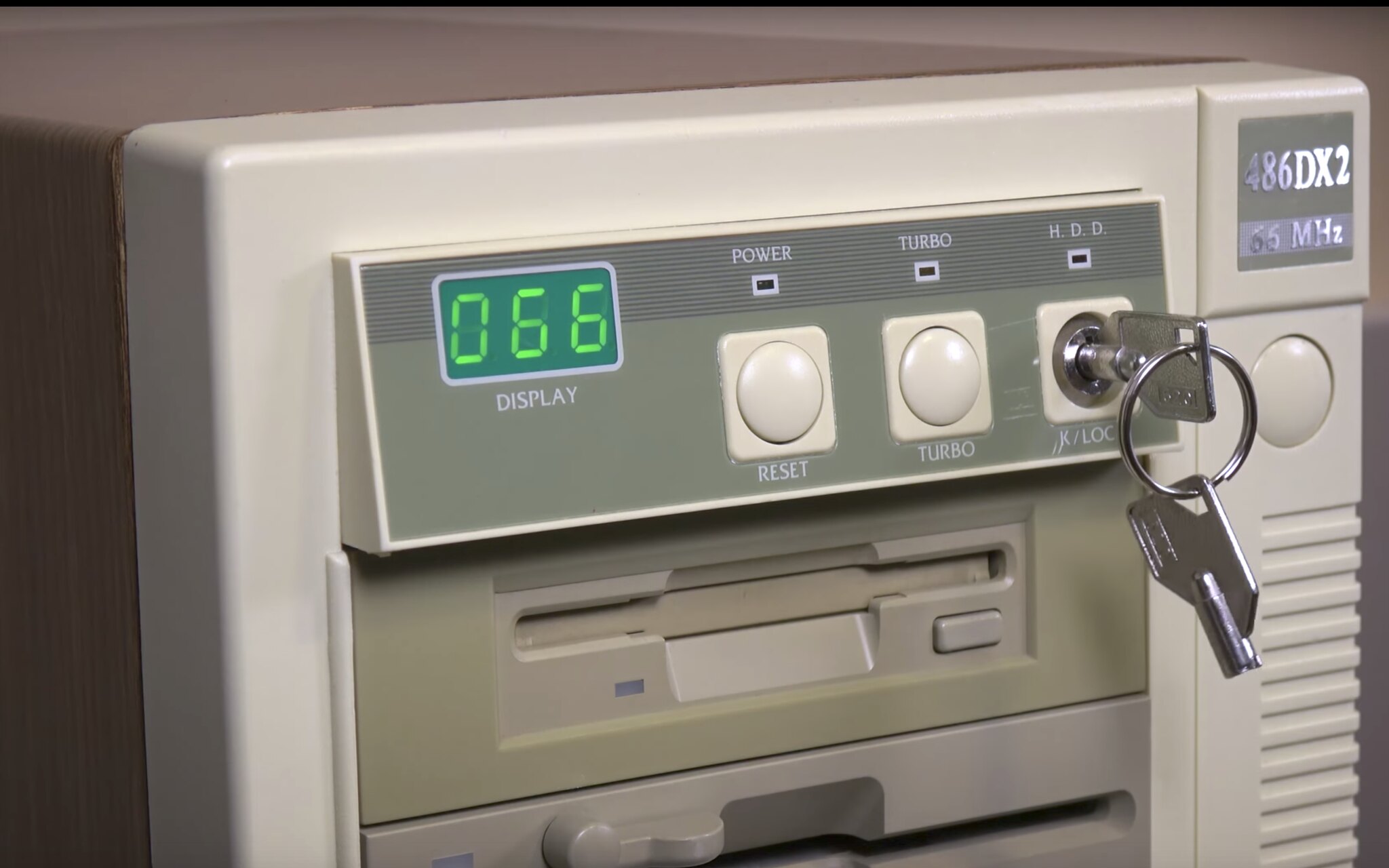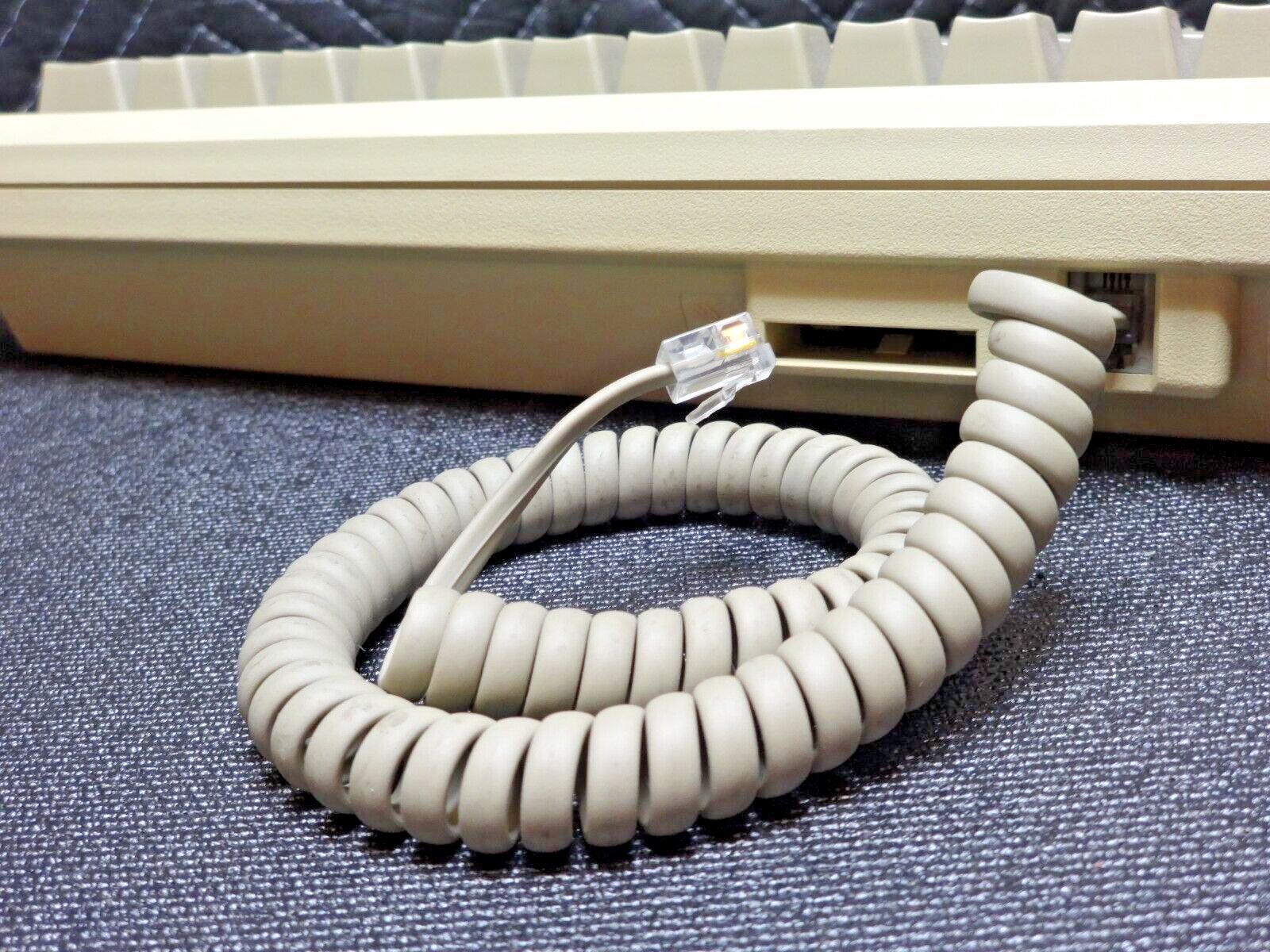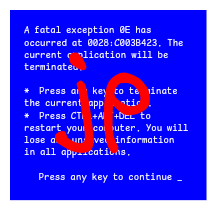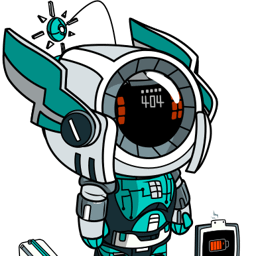
I got that reference. Fuck, I’m old.
Please explain? I get that the chubby bird is speaking assembly, but I’m sure there’s more to it than that?
PS2 keyboards use interrupts rather than polling in USB, meaning every time a key is pressed the CPU stops what its doing to process it.
Cool! I had no idea it was deeper than just a physical interface change.
I’m this old

The ol’ RS232?
Big keyboard jack, serial for mouse, parallel for printer

Don’t forget the serial input for gamepads and joysticks in the dedicated sound board for some reason
Early PC only had 5 card slots, and the only jack on the motherboard was the keyboard. One slot is going to be used by a video card, one’s probably being used by a hard drive controller, one’s probably used by a parallel + serial card. Soundcards also included controller ports to try to save a slot.
I thought sometimes they called them game ports (for the joystick.)
I reasoned if you are installing a sound card, you are probably doing some gaming, so it made sense to sort of bundle those together.
Its on the sound card because it’s a midi port. Its designed for connecting a keyboard (as in electronic piano). Most people used it for gamepads but that’s not what it was there for.
And because the PC only have 1 serial port, you disconnect the printer and use a parallel to serial adapter.
Except that wasn’t a serial port, it was midi, and the reason it was on the sound card was because the input was analog.
Your joystick was just two fancy potentiometers, and your soundcard decoded the voltage on the middle legs into a position.
Soundcards handled joysticks because they had the fastest ADCs.
Wow, 30 years later and I’m just learning this now. Thank you
More info: https://en.wikipedia.org/wiki/Game_port
The 15-pin D-sub connector itself was apparently a combination of analog and digital. It had to be, since MIDI is digital (it’s right there in the name: Musical Instrument Digital Interface). TIL it wasn’t all digital.
huh, i thought it was just because “owning a sound card” and “likely to play games” was the biggest overlap of the Venn circles.
They didn’t even use an ADC. They used 555 timers to produce a pulse. They measured the length of the pulse to determine the potentiometer position. Since there are 4 analog inputs, they typically used the 558 timer which is the quad version of the 555.
And here I thought I had it all figured out. But it does make sense. Doing it with an analog signal introduces noise and measuring pulse widths is going to be simpler.
Yes, this is where my PC master gaming started.

What kind of connector is this? I remember seeing them on 1970s audio equipment, maybe for mic in?
It’s an AT/ XT keyboard connector.

And back then if we did have a mouse, it was square, and used a 9pin serial port

My keyboard still uses a PS/2 port via adapter. 1986 Model M, still clicky.
This reminds me when a mouse was an option not a requirement
still is
/i3gang
DEFINITELY optional
go go gadget commandline
“how old are you?”

TURBO!!!
The “Turbo” function was a masterstroke of marketing.
The actual function of the turbo is to slow the machine down, so it can be compatible with older games and software that ran too quickly on those newer systems.
Of course calling it a “slow down” button wasn’t very sexy, so just flip the function around and label it turbo instead!
You guys had keyboards?

In my day, the RJ-11 jack was for connecting the keyboard, not the phone line.

Okay that’s something I had no idea about hahaha
I remember those days.

“do you know what ps/2 ports are?”
“holy cow, PlayStation 2? you must be AT LEAST 25!”
[dying inside intensifies]
IBM sure made naming pretty confusing aren’t they?
Ps/2 ports predated the PlayStation 2 by years. Sony made naming confusing in this case.
How can ports of a game predate the platform itself? That makes zero sense.
(/s)

I’m this old.

Are these not still in use?
I’ve not built a tower in a few years granted, but the last one I built had PS2 ports. Heck it even had VGA for the onboard graphics.
They are. Lots of motherboards still include these. There are a lot of special PS/2 input devices that are still around in business/industrial settings and gamers sometimes need them for use with flight sticks, steering wheels, mechanical keyboards etc.
Usually it’s a combo port now instead of a separate port for keyboard/mouse.
I actually wanted a PS2 port because it works with interrupts rather than polling but they aren’t really included anymore.
I feel like they don’t make boards for people like me who want small boards with a super niche port.
When a MoDT Mini-ITX board comes out with a PS2 port I will buy that instantly
Can you actually notice the latency?
I only had it briefly a long time ago,
I think certain things can stall the computer from polling, so if you’re computer is super weak or youre doing something super heavy it would suffer
Maybe its a placebo effect but I did notice it handle itself better when running multiple things.
I raise

edit, actually, it might have been on the back…it’s been forever since I touched one

Ooh, I had a serial mouse (9 pin) from Microsoft of all companies, in the 90’s.
Damn good mouse.
I’ll see your raise, and up it:

Please,

I always see those videos where people give kids a walkman or a rotary phone and ask them to figure out what it is or how it works. I’m imagining some medieval merchant handing me an abacus and laughing because I can’t figure it out.
It’s little endian, so the beads on the far right are used to outnumber the big endian beads at the top on the woke left. After several computations, the middle section is just gone
Tried reading about endianness once. Pretty sure it can’t be dumbed down enough for my brain.
You know how some languages write left-to-right, and some rught-to-left? Endianness is that, for numbers.
Or another analogy is dates: 2025/12/31 is big endian, 31/12/2025 is little endian. And 12/31/2025 is middle endian. Which makes no sense at all because the middle is, by definition, not an end.
I stand corrected. No idea what I was reading (several years ago), but whatever it was made it seem way more complicated. Maybe it was just an explanation from somebody who didn’t know.
Young whippersnappers.

You kids don’t know how good you have it!

Fun fact, the Romans would never have labeled their abacuses like this. It would have made calculating very difficult; they effectively worked with modern numbers in bead form, and then used the famous numeral system just to record the results.
My buddy still has one of those in his garage.
My age in fond memories:


I don’t have long for this world…
Me too… my first code was for Commodore PET. Then I got an Amiga. Sad day when Commodore folded.
On the Amiga’s 40th birthday I brought the old Amiga 500 out of storage to the dinner table and we had cake. Just realized I should do the same with the Atari ST, for more cake. I think my family tolerates me because of the cake.
Back in my day they weren’t color coded.
Back in my day days didn’t exist /s
That’s because color hadn’t been invented yet and therefore people could only see in black and white. That’s why old shows don’t have color.
The time of the classic “Keyboard missing. Press F1 to continue.”
You know that thing that you don’t have? You should press buttons on it.
Fuck you computer…
The error message sounds bad, but it was actually a good thing. A better phrased error message might have been “Keyboard missing. Connect a keyboard and press F1 to continue.” But, in the early days every byte mattered.
The system wouldn’t work without a keyboard, and if you get further into the boot process you might not be able to shut down cleanly if you didn’t have a keyboard attached. That error message gave you a chance to attach the keyboard, or to troubleshoot why the keyboard wasn’t being properly detected (like the plug got bumped and wasn’t making good contact anymore).
It was annoying when the lack of a keyboard was intentional. Like, you wanted to use the machine as a server. But, AFAIK you could disable this check if you knew the machine was going to be a server with no permanent keyboard attached.























